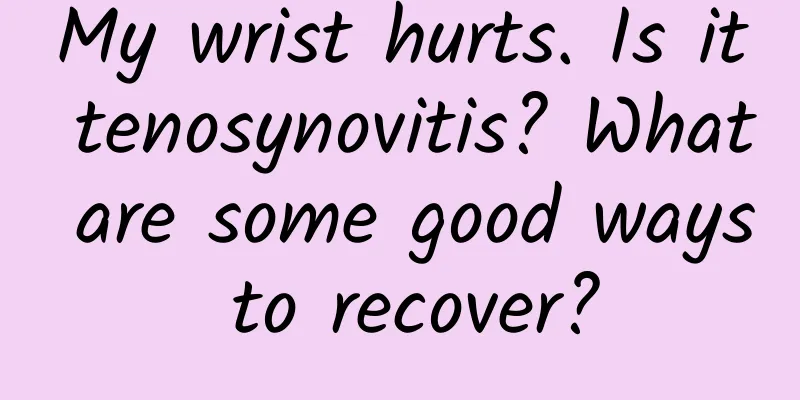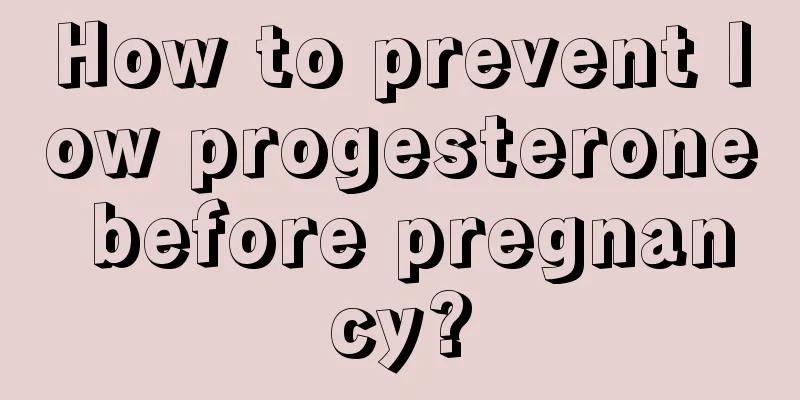My wrist hurts. Is it tenosynovitis? What are some good ways to recover?

|
When it comes to wrist tenosynovitis, I believe everyone is familiar with it. It also has other names, such as "mobile phone hand", "mouse hand", "mouse hand", "mom hand", "grandma hand", etc., all of which refer to it. This disease is very common and is more common in manual laborers. It may be caused by various factors: playing with computers, playing with mobile phones, often holding babies, breastfeeding, doing housework for a long time, and hormone changes are also common causes of the disease. Women often have it before and after pregnancy, childbirth and breastfeeding. Hormonal changes can cause edema in the tendon sheath and increase pressure, which makes it more likely to develop into tenosynovitis due to strain. However, does wrist pain mean tenosynovitis? Not necessarily! For example, osteoarthritis, ganglion cysts, autoimmune arthritis, rheumatoid arthritis, and peripheral neuritis may also cause joint pain and tenderness in the early stages. So how do you tell if you have tenosynovitis? Liu Bo, deputy chief physician of hand surgery at Beijing Jishuitan Hospital, said that one of the most commonly used examination methods is to hold the thumb in the palm of your hand, and tilt the wrist downward (to the little finger side). If there is obvious pain on the side of the wrist at the base of the thumb, it can generally be diagnosed as wrist tenosynovitis. (Photo from Guangming.com) In addition, there are three other typical symptoms of tenosynovitis: 1. Snapping, there will be a snapping sound when the wrist moves; 2. Lump, there is a lump at the base of the thumb on the wrist, and it is painful when pressing; 3. Pain during movement, pain occurs when the wrist or thumb moves with force. The doctor also reminded: Testing is only part of the clinical diagnosis. If you experience pain in the fingers or adjacent parts of the wrist, limited mobility, and other symptoms, you should go to the hospital promptly and have an orthopedic or hand surgery specialist perform appropriate physical examinations and tests to confirm the diagnosis. So what should you do if you are diagnosed with wrist tenosynovitis? Don't worry. For early or mild cases, you can relieve pain and inflammation by applying hot compresses to the wrist or applying antipyretic and analgesic ointments locally. But the most important thing is to get enough rest for the wrist. Wearing a wrist protector is very useful, which helps reduce the bad force on the wrist and helps the inflammation subside. In daily life and work, it is best to do less or no housework during the acute stage of wrist tenosynovitis, and reduce excessive and frequent joint movements. If you really need to hold your child, you also need to pay attention to adjusting the way you hold your child. That is, hold the child with the wrist that does not hurt on the other side, and use your elbow to apply force on the painful side, so that your wrist and fingers are free, keep them relaxed, and do not exert force. Most people will gradually get better through conservative treatment. If the pain symptoms persist for a long time and affect wrist strength and normal work, you need to seek medical treatment in time. |
<<: BusinessInsider: Google+ can't beat Facebook: Few users, lots of spam
Recommend
How many days of bleeding after painless abortion
Today's society is becoming more and more ope...
What is the brown dirt in the vagina?
When a woman's menstruation is not completely...
Can female urinary tract infections heal on their own?
Urinary tract infection is a problem that many wo...
What causes continuous vaginal bleeding?
Some women always experience continuous bleeding ...
Are blisters on the mouth caused by "getting angry"?
Not really Blisters around the mouth are not caus...
Polycystic ovarian follicles
Polycystic ovary syndrome is a very common diseas...
What can vaginal ultrasound detect?
Transvaginal color ultrasound is a term that is r...
What are the symptoms of Bartholinitis
The occurrence of Bartholinitis is often related ...
Why does a woman have light pink vaginal discharge?
Women must pay attention to their reproductive he...
Can I feed my baby if I have diarrhea during breastfeeding?
In their daily diet, female friends are often eas...
Where is Ali in Tibet? What is the difference between the Tibetans in Sichuan and Tibet?
Tibet, referred to as "Zang", is locate...
Can I eat kudzu during menstruation?
We all know that Pueraria root has the effect of ...
What are breast anti-inflammatory drugs?
Women's breasts need careful daily care, othe...
Female scrotal itching
Under normal circumstances, the private parts of ...
How to treat cervical hypertrophy?
Female friends are the most vulnerable to illness...









